Review
The new Audi A5 is sleek, sophisticated and enjoyable to drive. With the introduction of a new plug-in hybrid engine it’s also, now, a great company car choice.
Overview
Audi’s recent range consolidation exercise saw the A4 become the A5, with the latter now offered in just saloon and estate bodies with no coupe or convertible options to be seen.
The A4 used to be a major player in fleet, until the rise of electric and plug-in hybrid models saw it pushed to the bottom of the pile with only petrol or diesel engine options. Likewise, the sleeker A5 was popular with company car drivers, but fell out of favour in recent years for the same reason.
Audi is fighting back with the latest A5, which comes with a new, more advanced, plug-in hybrid engine. There’s no electric model, though. The A5’s Premium Platform Combustion (PPC), which is shared with the new Q5 and A6, is designed specifically for cars with engines.
The Premium Platform Electric (PPE), used in the A6 e-tron, will host a new electric compact saloon. It is expected this model will retain the A4 nameplate and it will be sold as a sister car to the A5.
For now, the A5 is offered with petrol or diesel engines, along with an eHybrid plug-in hybrid.

It retains a familiar silhouette but integrates new Audi styling features such as flush door handles and a new lighting signature.
Prices start at £41,950 for the A5 Saloon with a petrol engine. The eHybrid starts from £48,950.
There are three trim levels available across the line-up: Sport, S Line and Edition 1. A Technik grade is additionally offered on the eHybrid.
Audi also offers a performance-focussed S5 variant, which starts at £68,700.
Comfort and practicality
Both the saloon and Avant bodystyles have identical exterior dimensions, which are slightly larger than those of the previous A5. It has an overall length of 4.83 metres and a length of 2.10 metres.
The saloon is actually a fastback, like the outgoing A5, with a rear hatch rather than a boot. It aids practicality, giving access to a spacious loadspace. There’s a capacity of up to 445 litres, but the eHybrid only gets 331 litres. The rear seats on all models have a 40:20:40 folding rear seats.
The Avant has slightly larger luggage space, mainly enhanced by the space above the parcel shelf. Official capacity is up to 476 litres but, again, that drops to 361 litres for the eHybrid.
The A5 has a driver-centric cabin with the dashboard angled towards the driver and a low seating position, giving a sporty feel.
There’s a decent amount of space on board, for both front and rear passengers. Despite the sleeker roofline, headroom is generous too.
Interior quality is a mixed bag. The surfaces look more impressive than they feel, in places. The upper parts of the dash and door panels are better than the lower parts. There’s also a lot of gloss black surfaces, which quickly lose their shine to dust an fingerprints.
Technik and Sport grades come with cloth upholstery. Leather comes as standard on S Line and Edition 1, or if you spec the £4,145 Sound and Vision Pack.
There are some really neat touches, like the internal door handles that integrate neatly into the speaker then match the curvature of the dashboard. This design feature is further enhanced by the integrated LED ambient lighting at night.

Safety and technology
Audi has integrated a number of new technologies into the A5, most of which are part of its new infotainment system. Switchgear has been minimised, in favour of a large 14.5-inch central touchscreen. It’s mounted in a panel that incorporates the instrument cluster for a more seamless display.
The new interface has clear and concise graphics, although the raised position of the screen makes it less convenient to operate by touch. There’s no physical controller, but Audi has integrated an Ai-powered voice control system.
Climate and heated seat controls are at the bottom of the display and remain so, regardless of what else you’re doing.
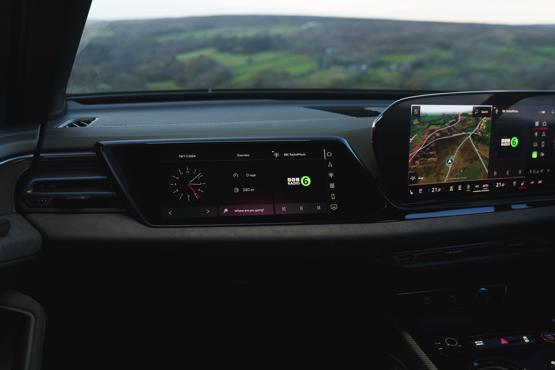
Audi offers a third display, as an option, for the front passenger. This largely mirrors the information available on the main screen and gives the passenger control over the car’s audio system.
A wide range of driver assistance systems are fitted across the model line-up, such as adaptive cruise control and lane keep assist. The A5 also comes with parking sensors and a reversing camera as standard.
Calibration of mandated features, such as autonomous braking, lane departure warning and speed limit assist is impressive with minimal interruption to the drive. You can easily adjust the parameters of these systems via a dedicated button on the dashboard. Speed assist can also be toggled on/off via a customisable button on the steering wheel.
Driveability and efficiency
A streamlined engine line-up is available on the A5, starting with a 150PS 2.0-litre petrol unit. There’s also a 200PS version of the engine, both with front-wheel-drive. The 2.0 TDI is fitted with a mild hybrid system and has 204PS. It can be specified with Quattro all-wheel-drive. The S5 is also a mild hybrid and uses a 3.0-litre turbocharged V6 engine with 367PS. It comes with Quattro as standard.
Most fleet customers are likely to prefer the eHybrid, however. It pairs a 2.0-litre petrol engine with a more powerful electric motor, giving 299PS. A 20.7kWh (useable) battery provides a zero-emission range of 67 miles.
Performance from the eHybrid is impressive, with 0-62mph taking less than six seconds. Most driving can be done purely in EV mode, where a real-world range of more than 50 miles is possible.
The car has a variety of operating modes, depending on how you want to utilise the available battery charge. If you use the car’s navigation it will work out the best way to deploy electric and petrol power automatically. You can also manually set the minimum desired charge level and the car will perform as needed to meet it.
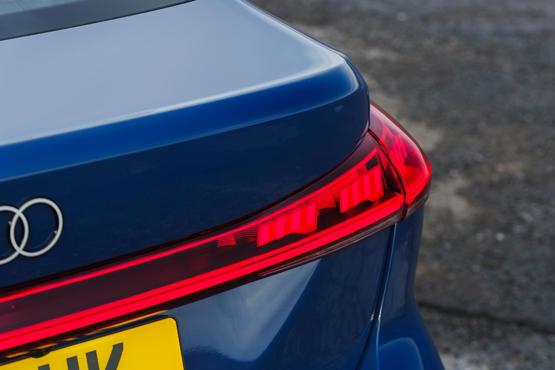
All hybrid A5s use a brake-by-wire system that prioritises regenerative braking for the hybrid system, before applying the friction brakes. An upshot of the system is that brake pedal feel is more natural as the car manages the transition seamlessly, based on how hard you hit the pedal.
The eHybrid has small delay in engaging the petrol engine for unexpected bursts of acceleration, although this can be overcome by switching the transmission from Drive to Sport.
Engine noise is well supressed. In fact, all noise is well supressed. The A5 is really quiet on the move, providing a peaceful sanctuary from the outside world. It’s a smooth riding car, too. At least the test models we tried – all with adaptive dampers – were isolating us from the rough road surfaces beneath.
Petrol A5s feel the most lethargic, unless you go for the S5, and are the least efficient. The diesel offers better economy and is torquier, giving a quicker 0-62mph time than either TFSI manages.
It’s the eHybrid, therefore, that offers the sweet spot in the line-up. It’ll manage more than 40mpg with a flat battery and upwards of 60 when the hybrid system is utilised. For fleets, it’s also the only powertrain that makes sense financially.
Company car tax and running costs
The most efficient A5 TFSI has CO2 emissions of 156g/km, while the TDI starts from 126g/km, meaning benefit-in-kind tax bills will be significant.
The eHybrid, however, is much more palatable with a 9% tax rate for the 2025-26 tax year. It’s worth noting that if you specify the 20-inch wheel option then this jumps to 16%.
Running costs for the eHybid are TBC but based on price alone, the A5 represents good value. Its closest rival is the BMW 330e, which has a slightly shorter electric range but a more dynamic drive.
Matt has been an automotive journalist for nine years and has driven just about every new car and van that's on sale. As content editor - vehicles he is responsible for the automotive content on Fleet News and also contributes to Automotive Management. Prior to this, Matt worked in the automotive industry for 10 years.















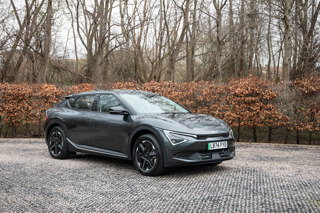
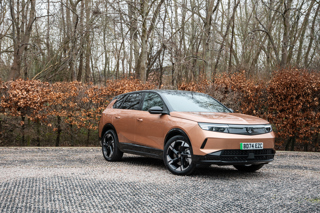


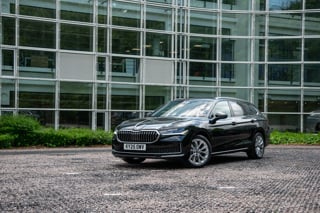












Login to comment
Comments
No comments have been made yet.